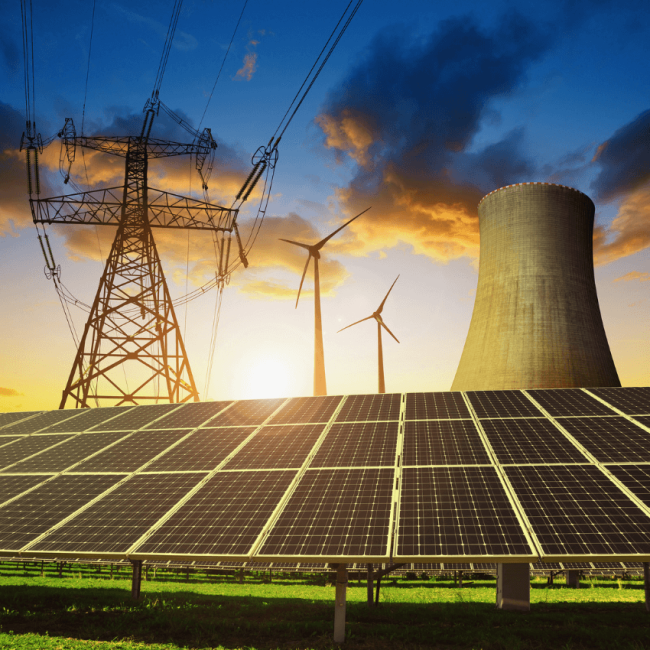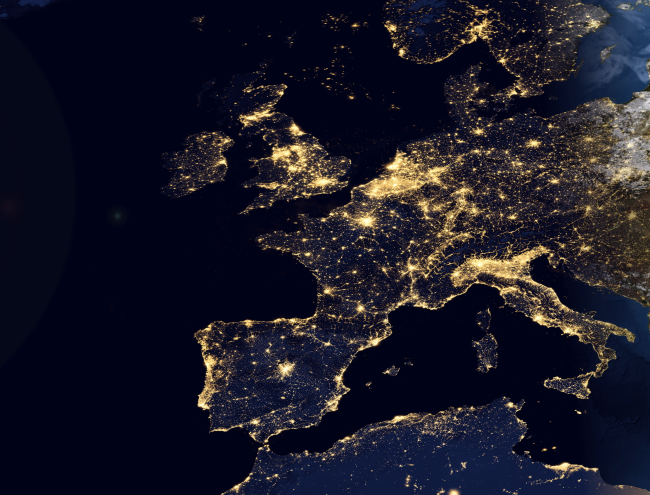Which Lessons Have We Learned from the 2005-2007 Trial Phase of the EU Emission Trading System?

Making a political and economic success out of the 2005 - 2007 trial phase of the European Emissions Trading System (henceforth EU ETS) was always going to be difficult. Never before such a massive emissions trading system has been implemented. In addition, the European effort was hampered by politically difficult negotiations with member countries about their National Allocation Plans (NAPs). Currently, three months before the end of the trial period, with spot prices hovering around 10 cents per tonne of CO2 (future prices for December 2008 delivery, however are at a healthy 20 Euros per tonne), it is widely believed that free-riding EU member countries achieved to negotiate an over-allocation of emission permits. A strong rise in electricity prices during the first 18 months of the EU ETS when operators had to integrate up to 30 Euros per tonne of carbon into their cost calculations also tested the resilience of European electricity consumers.
Given these mixed signals emanating from Phase I of the EU ETS, what is surprising is not that there are now healthy intellectual and political debates about different features of the EU ETS (banking provisions, new entry reserves, different ceilings for NAPs, amount of auctioning, investment incentives etc.) but that there is virtually no constituency calling for its abolition. More importantly, our knowledge about the working of the EU ETS (which is after all a market with decentralised decision-making) and the possible solution to the above issues is continuously improving. The 2005 - 2007 period (Phase I) was a trial period. Experts, decision-makers and participants are involved in a long-run learning process that is far from being concluded but has already advanced considerably. So while we do not have all the answers, we do have some. In particular, we are now much better capable of formulating the pertinent questions in a manner that they can be fed into political decision-making processes. In the following, we will briefly summarise the lessons - however imperfect and preliminary - that we have learned so far.
Lesson 1: Do not demand perfection from a prototype.
The most serious issue surrounding the EU ETS is the fact that it has been unable to deliver a credible price signal in the second-half of the trading period. Following the sharp decline of prices in April/May 2006, when prices fell from carbon prices fell from 30 Euros per tonne of CO2 to 10 Euros, the market never completely recovered and began a long slide below 1 Euro per tonne of CO2 until the beginning of 2007, when prices settled at their current level of below 20 cents (see also the graph below). Supposedly prices reacted to leaked information about several member countries where the gap between allowances and actual emissions was greater than expected.
In principle, there is nothing wrong with a market reacting to incoming information about excess supply with a price decline. Supporters of the system were quick to point this and concluded that there was no systemic failure but, unfortunately, excess supply of allowances. So far, so good. More worrisome is that there exist no convincing explanations for the formation of carbon prices prior to May 2006. In theory, prices should reflect fundamentals of the supply and demand of carbon permits. One would thus expect prices to equal the marginal cost of reducing one tonne of CO2 (for instance, by switching from coal- to gas-fired generation. There is little evidence that there was such a link. While several analysts focussed on the spread between gas and coal prices, there is ultimately no link between the spread and carbon prices. In fact, carbon prices were never high enough to overcome the price gap and to warrant coal-to-gas substitution due to the short-time horizon that was provided by a three-year trading period. In other words, the three-year-period of Phase I was simply too short to provide a meaningful price signal.
Lesson 2: Short time horizons by public and private actors prevent connecting prices to fundamentals.
More than 1 billion tonnes of CO2 emission allowances of the 2 billion tonnes under the EU ETS have been allocated to electric utilities. (Total European CO2 emissions are around 4 billion tonnes, total greenhouse gas emissions about 5 billion). Unsurprisingly, they have been the most active buyers and sellers of permits. It was in electricity markets (and here, in particular, in the futures market) that carbon prices had their main impact with an extremely close relation between the price of carbon permits as one would expect in the case of a financial asset without alternative uses yielding no interest) and the price of the calendar, the one year forward contract for electricity delivery. Electricity forward prices, which determine the cost to consumers of more than 70 per cent of total supply, thus moved with the carbon price from 35 Euros at the beginning of the period to over 60 Euros in mid-2006 to around 50 Euros at the end of 2006, which corresponds to their current level.
This is not to say that carbon prices are the only explanation for massive swings in electricity prices. Resource costs, scarce power generation capacity, limited availability of interconnection capacity all play a role in determining the cost of long-term power supplies. There can be little doubt, however, that carbon prices have contributed to large changes in electricity prices and thus to large changes in the profitability of power operators. It is no secret that the share prices of all major power companies, those with carbon-intensive as well as those with largely carbon-free generation capacity, rose strongly during the first two years of the EU ETS.
Lesson 3: The electricity market is not only the most important driver for the carbon market, but also the market most affected by carbon prices
There is a question to which extent the EU ETS should develop in geographical and temporal isolation, i.e., to which extent each phase should be linked to other trading system and other phases. The theory is clear: the larger the geographical area and the number of industries over which emission trading applies and the farther the time-horizon over which it extends, the lower will be the economic cost of emission trading. In other words, the more fungible the emission allowances, the cheaper they will be. The reason is simple. The essence of a trading system is to minimise the economic cost of abatement by giving firms with cost-efficient reduction opportunities an incentive to do so and to let firm"s without reduction opportunities an option to buy themselves out of their obligation. The further one stretches this logic, the more advantages it will provide.
Yet, in practice matters are not that simple. Concerning geographical transferability, the key issue is that differences persist in the quality of the registered emission reductions. It is, for instance, widely believed that emission reductions under the EU ETS are adequately policed and thus fully worth the nominal amount of the corresponding allowances that are sold against them. Instead, there are doubts whether all emission reductions under the CDM, which are validated by the CDM Executive Board after verification by accredited audit companies, the Designated Operational Entities (DOEs), are worth, one-to-one an European allowance. The analogy with the trading of financial credit is quite apposite. The problem is that credit quality might be even more difficult to assess in young and unproven carbon markets than in financial markets with well-established informational infrastructures. Establishing those infrastructures and putting in place insurance mechanisms in case they fail is one of the tasks of a European “carbon governance” in the near future.
Lesson 4: “Technical issues” decide over prices and profits; adequately formulated and prepared they need to be decided politically.
On of the most important issue from a company point of view is the allocation mechanism which decides the amount of its profits. The key question is whether firms receive these EUAs for free on the basis of their historic emissions (an arrangement also known as “grandfathering”) or whether they have to pay for them by bidding for them in an auction.
Auctioning would have the advantage of conformity with the Polluter-Pays-Principle and thus guarantee the correct price incentives to minimise abatement costs. It would, for instance, make investment retention an unprofitable option, given that keeping emissions high would not imply any right to future allocations for free. Conversely, giving out carbon permits for free has all the disadvantages except one: it is consistent with the historic allocation of property rights. Historically, the right to emit CO2 into the atmosphere belonged to power companies and industry, as well, in prolongation, to their customers who could by carbon-intensive goods cheaply. Industry, governments, consumers and the general public were used to this arrangement and structured themselves around it. Grandfathering, giving out allowances for free, respects this arrangement. In terms of political economy, free allocation guaranteed the feasibility of the EU ETS. Future arrangements will need to allow for appropriate transitions.
Lesson 5: The right to emit greenhouse gases is an economic and financial asset; its distribution needs to be solved in the context of a politically sustainable coalition.
The European Commission"s Directorate General for the Environment that manages the EU ETS has been accused both of being too centralised and dictatorial and of being too weak in confronting member countries" demands for more generous quota allocations in the National Allocation Plans (NAPs). It is a classic case of too much and too little at the same time. Currently, it seems politically unfeasible to work without the middle layer of national governments between a top European layer and a bottom local layer where single installations receive their allotments of carbon permits.
Despite these intrinsic difficulties, the distinct impression is that the Commission could have done better. The Commission"s own estimations of future emissions - which are the basis for its decisions on the NAP - were made in a debonair, particularly obscure process without any systematic communication with national research institutes. It is futile, however, to point fingers at individual institutions or countries. What Europe needs is “carbon governance”, a politically legitimised, coherent set of institutions that can organise, oversee and validate the necessary research and the decisions concerning the different aspects of the EU ETS, most important among them the National Allocation Plans and the rules for allocating EUAs among participating installations. Such carbon governance is all the more necessary as EU leaders seem to have taken the habit of announcing evermore stringent emission reductions at their regular gatherings (having arrived at a whopping 40 per cent reduction of greenhouse gases from 1990 levels if other countries join) without providing themselves so far with the means to arrive there.
Lesson 6: Europe quickly needs "carbon governance" to establish the rules of engagement between the Commission and the member states
The EU ETS is entering Phase II much stronger than it entered Phase I three years ago. Emission caps are much more realistic and operators, traders and experts are much better equipped to separate fact from fiction in their pricing decisions. Also the Commission seems determined not let itself be surprised by events. Witness the discussion about the inclusion of the airline industry in the EU ETS by 2013 “or earlier”. The key issue is the length of the allocation period. Ideally, that length of allocation should be one capacity cycle, i.e., around 40 years, the lifetime of an electric power plant. That said, the 2005 - 2007 trial phase of the EU ETS is far less of a failure than of its opponents are wont to have it. The market works. The informational and transactional infrastructure is beginning to develop. The market for Phase II is vibrant with solid activity and price movements that for the time being do not look irrational, although we are certainly not at the end of surprises, given the remaining fragility of their link with economic and technical fundamentals.
Perhaps more importantly, the EU ETS is a political success. Given the accumulating evidence for man-made climate change, others are looking to Europe for its leadership in this area. Not only the UNFCCC, but also the United States, in particular California and the North Eastern states, are looking at the EU ETS, either to learn from its successes and mistakes, or to link up with it outright. And let us be frank. The task now is not to loose focus, to create the institutional structures for European carbon governance, to set in place a long-term vision for the allocation process and, most importantly, provide long-term visibility about the stringency of the Europe-wide carbon cap.
Lesson 7: Create visibility for post 20 2012 and extend the allocation period to the lengh of one capacity cycle (at least 30).

Available in:
Regions and themes
Share
Related centers and programs
Discover our other research centers and programsFind out more
Discover all our analysesBrazil One Year Away from the October 2026 General Elections
Brazil’s general elections will be held on October 4, 2026, to elect the president, vice-president, members of the National Congress, governors, deputy governors and state legislative assemblies. For the presidential and gubernatorial elections, a second round will be held on October 25 if no candidate obtains a majority of the votes in the first round.
COP30: An Inflection Point for Climate Action and Governance
The 30th Conference of the Parties (COP30), opening in Belém, Brazil, on November 10th 2025, convenes at a perilous moment.
The Strategic Dimension of Skills in the Clean Industrial Deal
In the competitiveness and energy transition battles, the European Union (EU) must master a determinant factor: skills.
The Energy Transition Faces Geopolitical Challenges. How Can Ideological Divides Be Overcome?
President Trump’s positions and policies, combined with record coal consumption and booming global electricity demand, geo-economic confrontation, and widespread concerns about energy security, are changing the game when it comes to understanding realistic decarbonization trajectories. The war in Europe is intensifying competition between defense and transition budgets. This is also the case elsewhere in the world.









